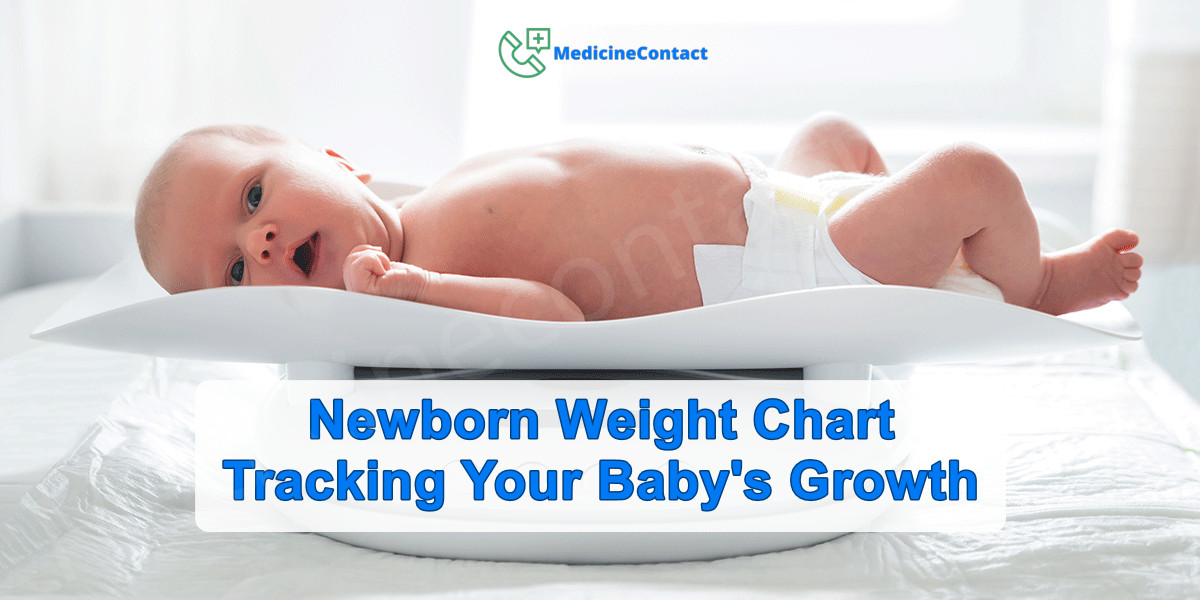
Introduction
Welcoming a newborn into the world is a momentous occasion, filled with joy and countless responsibilities. One of the critical aspects new parents must focus on is their baby's weight. Monitoring newborn weight is crucial for ensuring their health and development.
Why is newborn weight so important?
- Health Indicators: Newborn weight can provide early signs of nutritional needs or potential health issues.
- Growth Tracking: Regularly tracking baby growth helps in assessing whether they are developing as expected.
Understanding newborn weight charts and growth tracking offers invaluable insights. These tools allow parents to:
- Track Progress: Monitor how their baby compares to national averages and identify any deviations early.
- Make Informed Decisions: Work closely with healthcare professionals to address any concerns swiftly.
By mastering the knowledge surrounding average baby weight, newborn weight charts, and growth patterns, parents can better support their child's journey through infancy. This article will guide you through every essential aspect of tracking your baby's growth effectively.
Understanding Average Baby Weight
Average baby weight refers to the typical weight a newborn is expected to have based on certain factors such as sex and gestational age. For instance, a full-term male baby generally weighs around 3.3 kilograms (7 lbs 5 oz), whereas a full-term female baby typically weighs slightly less at about 3.2 kilograms (7 lbs 1 oz).
When considering the average weight for infants born at full term (37 to 40 weeks), the range usually falls between 2.5 to 4 kilograms (5 lb 8 oz to 8 lb 13 oz). These figures provide a baseline, but individual weights can vary significantly due to various influences.
Several factors can impact the average birth weight:
- Genetics: Parental genetics play a crucial role in determining the baby's initial weight.
- Prenatal Care: The quality of prenatal care, including maternal nutrition and health, significantly affects birth weight.
- Health Conditions: Babies born with medical conditions or complications may have different weight ranges compared to their healthy peers.
Understanding these elements helps parents and healthcare providers identify what constitutes average newborn weight and length, aiding in tracking and promoting optimal infant health.
Newborn Weight Chart: An Overview
Newborn weight charts play a crucial role in tracking a baby's growth and development. A newborn weight chart provides a visual representation of your baby's growth over time, comparing their weight to standard values for infants of the same age and sex. These charts help identify whether a baby is growing at a healthy rate.
Growth charts are essential tools used by pediatricians during regular check-ups. They monitor not just a baby's weight but also their length and head circumference. By plotting these measurements on the chart, healthcare professionals can assess if the baby is following a typical growth pattern or if there might be potential concerns that need addressing.
One of the key components of these charts is percentiles. Percentiles indicate how a baby's measurements compare to those of other infants. For example:
- A baby in the 50th percentile for weight is right in the middle, meaning they weigh more than 50% of babies and less than the other 50%.
- Being in the 10th percentile would mean the baby weighs more than only 10% of peers, potentially indicating lower-than-average growth.
- Conversely, being in the 90th percentile means outpacing 90% of peers in weight.
Understanding where your child falls on a newborn weight chart provides valuable insights into their health and development. It helps parents and health professionals ensure that any deviations from expected patterns are promptly addressed, ensuring optimal growth outcomes for the infant.
The Importance of Tracking Baby Growth Patterns
Monitoring your baby's growth is crucial for ensuring their health and development. By tracking baby growth patterns, parents and healthcare providers can identify whether a baby is growing at a healthy rate or if there are potential concerns that need addressing.
Why Tracking Growth is Essential for Health Monitoring
Regularly tracking your baby's weight, length, and head circumference helps detect any abnormalities early on. This can:
- Identify potential health issues: Sudden changes in growth patterns might indicate underlying medical conditions.
- Ensure proper nutrition: Consistent tracking ensures the baby is receiving adequate nutrition, whether they are breastfed or formula-fed.
- Support developmental milestones: Keeping an eye on growth patterns can help verify that the baby is meeting critical developmental milestones.
Understanding Normal Growth Patterns
Understanding what constitutes normal growth patterns aids parents in distinguishing between typical variations and concerning signs. For example:
- Healthy baby weight gain varies but generally follows a predictable curve.
- Babies tend to double their birth weight by around four months and triple it by their first birthday.
- Regular measurements plotted on a growth chart help track progress accurately.
Common Growth Spurts in Infancy
Babies experience several growth spurts during their first year. These spurts typically occur:
- Around 2 weeks
- Between 3 to 6 weeks
- At 3 months
- At 6 months
During these periods, babies may seem hungrier than usual and may require more frequent feedings. Recognizing these spurts helps parents adjust care routines appropriately.
Understanding and maintaining accurate records of your baby's growth pattern helps ensure they are developing healthily and can alert you to any potential issues early on, enabling timely intervention.
Average Newborn Weight Gain
Understanding the average newborn weight gain is important for parents. In the first month, babies usually gain about 5-7 ounces (140-200 grams) each week. This fast growth is a good sign of their health and development.
Breastfeeding vs. Formula Feeding
Breastfeeding:
- Breastfed babies may initially gain weight more slowly.
- By the age of 3 months, they often catch up to their formula-fed peers.
- Breast milk provides optimal nutrition tailored to the baby's needs.
Formula Feeding:
- Formula-fed infants might show faster initial weight gain.
- Formula can be easier to measure, ensuring consistent calorie intake.
Common Misconceptions About Baby Weight Gain
- All Babies Should Grow at the Same Rate: Growth rates can vary significantly.
- Weight Gain Equals Overfeeding: Healthy weight gain is vital for development.
- Breastfed Babies Aren't Getting Enough: Slower weight gain in breastfed infants can still be normal.
Using a newborn weight gain chart helps track these patterns. For example, looking at a 1 month newborn weight can show if growth is on track or if there's a need to talk with healthcare providers.
With this understanding of newborn weight, parents are better equipped to understand and support their baby's growth trajectory.
Factors Influencing Baby Weight
Understanding the factors influencing baby weight can help provide insight into a newborn's growth patterns and overall health.
Role of Genetics
Genetics play a pivotal role in determining an infant's birth weight and subsequent growth. Parents' genes significantly influence the baby's size, with larger or smaller parents often having correspondingly larger or smaller babies.
Impact of Prenatal Care and Maternal Health
The importance of nutrition during pregnancy cannot be overstated. A well-balanced diet rich in essential nutrients supports optimal fetal development. Maternal health conditions such as diabetes, hypertension, and obesity can also impact birth weight. Regular prenatal care ensures any potential issues are identified and managed early, promoting healthier outcomes.
Differences Between Breastfed and Formula-Fed Babies
Breastfed babies typically gain weight more gradually compared to formula-fed infants. This is due to differences in caloric content and digestibility between breast milk and formula. Breastfeeding offers numerous benefits but may require more frequent feedings to meet the baby's nutritional needs.
By considering these factors, parents can better understand their baby's growth trajectory and make informed decisions about their care.
Learn more about newborn weight charts
Explore breastfeeding benefits
Addressing Concerns: When Newborns Aren't Gaining Weight
Common Reasons for Inadequate Weight Gain in Newborns
Newborns may not gain enough weight for several reasons, including:
- Feeding difficulties: Problems like poor latching or not enough milk supply can make it hard for a baby to feed well.
- Medical conditions: Issues like stomach problems, infections, or metabolism disorders can affect how nutrients are absorbed and overall growth.
- Prematurity: Babies born too early often weigh less at birth and might take longer to catch up.
Signs Parents Should Watch for Regarding Healthy Growth Patterns
Parents should keep an eye on their newborn's growth and look for signs that might indicate problems:
- Constant hunger or irritability: If a baby seems always hungry despite frequent feeding, it could mean they're not getting enough nutrition.
- Low urine output: Having fewer than six wet diapers a day can be a sign of not feeding enough.
- Lack of weight gain: Regular weigh-ins showing little to no weight gain over time are concerning.
When to Consult a Healthcare Provider
It's important to talk to a healthcare provider if you notice any of the following:
- Persistent lack of weight gain: If your newborn isn't consistently gaining weight, seek medical advice promptly.
- Developmental delays: Delays in reaching milestones like rolling over, sitting up, or cooing could be linked to nutritional deficiencies.
- Unusual lethargy or weakness: Excessive sleepiness or lack of energy could suggest underlying health issues affecting growth.
Understanding these signs helps ensure timely intervention and proper care for your baby's health.
Understanding Weight Loss After Birth
Newborns often experience a weight loss of about 10% of their birth weight within the first week after birth. This is known as the 10% rule and is generally considered normal. This initial weight loss can be attributed to several factors:
- Fluid Loss: Babies are born with extra fluid, which they naturally lose in the first few days.
- Adjusting to Feeding: Newborns need some time to adapt to feeding, whether breastfed or formula-fed, which can cause temporary weight fluctuations.
- Meconium Passage: The passing of meconium (the baby’s first stool) also contributes to early weight loss.
Monitoring the recovery of birth weight is crucial for assessing a baby's health. Pediatricians recommend that babies should start regaining weight by day 5 and return to their birth weight by 10 to 14 days old. Here are some guidelines for parents:
- Regular Weigh-ins: Keep track of your baby's weight through regular check-ups with a healthcare provider.
- Feeding Frequency: Ensure that the baby feeds every 2-3 hours, especially in the early days.
- Wet Diapers Count: A healthy number of wet diapers (6-8 per day) is a good indicator that the baby is feeding well and staying hydrated.
Understanding these patterns helps parents differentiate between normal newborn losing weight scenarios and concerning ones. Always consult a healthcare professional if you notice any unusual patterns in your baby's growth.
Growth Monitoring Beyond Newborn Stage
Infant development is a continuous process that extends well beyond the newborn phase, spanning up to 12 months. Understanding how growth progresses during this period is essential for parents and caregivers.
Monthly Averages for Infant Weights and Lengths
Growth patterns can be tracked using data provided by the CDC and WHO, which offer benchmarks for average weight for infants by month. Here are some general guidelines:
1 Month
- Weight: 3.4-4.5 kg (7.5-10 lbs)
- Length: 50-58 cm (19.7-22.8 inches)
2 Months
- Weight: 4-5.5 kg (8.8-12.1 lbs)
- Length: 54-62 cm (21.3-24.4 inches)
3 Months
- Weight: 4.5-6 kg (9.9-13.2 lbs)
- Length: 57-65 cm (22.4-25.6 inches)
6 Months
- Weight: 6-7.9 kg (13.2-17.4 lbs)
- Length: 63-72 cm (24.8-28.3 inches)
9 Months
- Weight: 7.2-9 kg (15.8-19.8 lbs)
- Length: 68-76 cm (26.8-29.9 inches)
12 Months
- Weight: 7.9–10 kg (17–22 lbs)
- Length: 72–80 cm (28–31 inches)
These guidelines provide a framework to help parents gauge their baby's growth month by month. Regular monitoring with these averages in mind supports identifying any deviations that may need attention from healthcare professionals.
Understanding these patterns ensures babies are on track with their peers and helps address concerns promptly, promoting healthy infant development.
The Role of Health Professionals in Tracking Growth
The Role of Health Professionals in Tracking Growth
Regular check-ups with pediatricians are crucial for assessing a baby's overall development. These visits allow healthcare professionals to monitor growth patterns, identify potential issues, and provide guidance to parents. The American Academy of Pediatrics (AAP) recommends routine well-baby visits at specific intervals during the first year of life, ensuring continuous monitoring.
Growth charts are essential tools used by healthcare providers. These charts, developed by organizations such as the Centers for Disease Control and Prevention (CDC), plot measurements like weight, length, and head circumference against standardized percentiles. Percentiles help determine how a baby compares to peers of the same age and sex:
- 50th percentile: Represents the average baby weight.
- Above 50th percentile: Indicates that a baby is heavier than average.
- Below 50th percentile: Suggests a baby weighs less than average.
Healthcare professionals evaluate these percentiles over time to assess whether a baby is growing consistently. A steady increase along the same percentile range typically indicates healthy growth. Sudden drops or rises may signal underlying health issues that need addressing.
Regular monitoring helps ensure that any deviations from expected growth patterns are promptly identified and managed. Pediatricians also provide valuable advice on nutrition and developmental milestones, making these check-ups an integral part of early childhood care.
For more information on growth tracking and average baby weight, refer to resources from the American Academy of Pediatrics and Centers for Disease Control and Prevention.
Conclusion
Understanding the average baby weight and using newborn growth charts are essential tools in monitoring your baby's development. These tools help track growth patterns through percentiles, offering valuable insights into how your baby compares to peers.
Key Points to Remember:
- Average Baby Weights: Full-term babies typically weigh between 2.5 to 4 kilograms (5 lb 8 oz to 8 lb 13 oz).
- Growth Charts: Used by pediatricians to monitor and assess a baby's development.
- Tracking Methods: Percentiles indicate how a baby's growth compares with others of the same age and sex.
By staying informed about these aspects, you can better understand your baby's growth journey. If you have any concerns regarding your baby's growth patterns, always consult with a healthcare provider. Their expertise can guide you in ensuring your baby's healthy development.
For more information on tracking your baby's growth, visit CDC's Growth Charts or WHO Child Growth Standards.
FAQs (Frequently Asked Questions)
What is considered average baby weight for newborns?
Average baby weight varies by sex and gestational age. Typically, full-term male babies weigh around 7.5 pounds, while full-term female babies average about 7.0 pounds. Understanding these averages helps monitor a baby's growth appropriately.
Why is it important to track my newborn's weight?
Monitoring a newborn's weight is crucial for their health and development. It helps identify normal growth patterns, detect potential issues early, and ensure the baby is receiving adequate nutrition.
How do I use a newborn weight chart?
Newborn weight charts are tools used by pediatricians to track a baby's growth over time. These charts display percentiles that indicate how your baby's weight compares to others of the same age and sex, helping to assess their growth trajectory.
What factors influence a baby's weight gain?
Several factors affect baby weight gain, including genetics, nutrition during pregnancy, prenatal care, and whether the baby is breastfed or formula-fed. Each of these can impact the infant's initial weight and subsequent growth patterns.
What should I do if my newborn isn't gaining weight?
If your newborn isn't gaining weight adequately, it's important to observe signs such as feeding difficulties or lethargy. Common reasons for inadequate weight gain include feeding issues or underlying health concerns. Consult a healthcare provider if you have any worries about your baby's growth.
Is it normal for newborns to lose weight after birth?
Yes, it is typical for newborns to lose some weight in the first few days after birth, often up to 10% of their birth weight. This loss can be attributed to factors like fluid loss and adjustment to feeding. Monitoring recovery of birth weights is essential during this period.
Disclaimer: This article is for informational purposes only and does not constitute medical advice. Always consult with a healthcare professional before starting any new treatment regimen.



